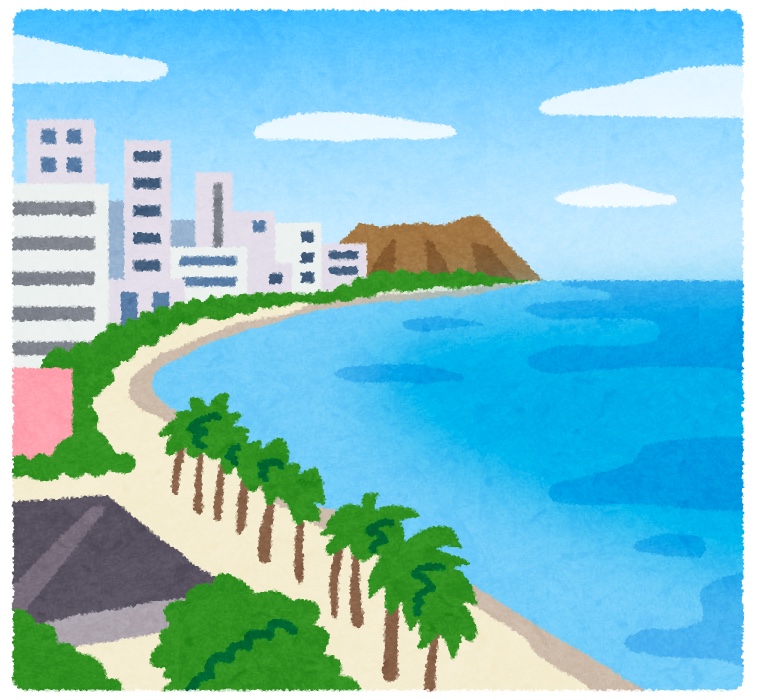History of Japanese in Hawaii
The history of Japanese immigration to Hawaii back to 1868. The first 150 immigrants to Hawaii were later called “Monongahela.
They came to Hawaii ship by from the port of Yokohama, seeking a new life in the United States. Only 33% of them remained in Hawaii.
The king at that time, King Kalamata, was very pro-Japanese, as he felt that the people of Hawaii and the Japanese were somewhat similar. It is said that after people called “Monoplane” came to Hawaii, he visited Japan and talked with them to see if more Japanese could come to Hawaii to work. Later, under an agreement between the Kingdom of Hawaii and the Japanese government, people from Fukuyama, Rigatoni, Hiroshima, Yamagata, Fukuoka, Minamoto, and Okinawa prefectures immigrated to Hawaii.
These Japanese immigrants were employed as contract immigrants on plantations, but they were not fluent in English. In addition, there were Chinese, Filipinos, and other immigrants from various countries. Therefore, Pidgin English, a mixture of their own native language and English, was born.
A single photograph brought a bride from Japan to Hawaii to get married.
Of the approximately 150 people who came to Hawaii as cancer patients, only a few were women. Later immigrants were mostly men, and although there were some women immigrants, most of them were married with their husbands.
At that time, when international marriage (marriage between immigrants) was not yet common, Nikkei brought her brides from Japan to start their families.
This was the picture of the bride. Since it was not easy to come to Hawaii by plane as it is today, women came to Hawaii to exchange only one picture and get married, marriage today is an unthinkable method today. This is what happened around 1908-1924.
Many people used photos of themselves that looked good or were younger than they actually were, and some people said, “That’s not the person I saw in the picture! Some people said, “That’s not who I saw in the picture!
Life of the Nisei
The Nisei, the children of Nisei, learned to live as Americans while maintaining Japanese values, and many became bilingual, using Japanese at home and English outside the home.
The Nisei were so-called degrease (migrant workers) to Hawaii’s plantations, so their social status is said to have been low. The Nisei parents always wanted their children to be educated so that they would not have to struggle in the United States.
The Nisei who grew up watching their parents struggle and work hard were very hardworking. They studied hard and many of them went on to high school and beyond, and gradually, the status of Japanese Americans in the U.S. was rising.
Then, in 1941, the Japanese attacked Pearl Harbor.
The Pacific War and Nikkei
The Pacific War is an inseparable part of the history of Japanese Americans in Hawaii.
In 1941, Pearl Harbor in Hawaii was attacked by the Japanese and the Pacific War began. This put Japanese Americans living in the United States at a disadvantage, even though they were Americans born in the United States.
Some Japanese Americans were interned at Honouliuli Internment Camp on Oahu and the internment camps on the Sand Islands.
It was not practical to send all Japanese, who at the time made up about 40% of Hawaii’s population, to internment camps.
Therefore, the Japanese who were interned were mainly those who were considered “potential Japanese spies,” such as teachers at Japanese language schools, people in the religious community, parents who had sent their children to Japanese schools for education, and others who could speak Japanese or had a relationship with Japan. It is said that many of them were Japanese language teachers, religious people, parents who had sent their children to Japanese schools for education, etc.
In addition, healthy men between the ages of 18 and 35 living in the U.S. were required to serve in the military. The 100th Infantry Battalion, formed mainly by Nisei of Japanese descent, was recognized as a very good soldier because of the seriousness of the Japanese and was even sent to fight in Europe.
The 422nd Regimental Combat Team, formed a year later, was also made up almost entirely of Japanese Americans. For the Nisei, this period of war fighting for their country was a painful experience, but also the greatest opportunity to show their loyalty to the United States.
And if they could show this loyalty, they could raise their social status after the war, so the war was like a gamble for them.
After the Pacific War, more Nisei took advantage of the G.I. Bill to study at universities and other institutions, and many Nisei became politicians, teachers, lawyers, doctors, and other positions because they were educated and successful in raising their status.




Comments